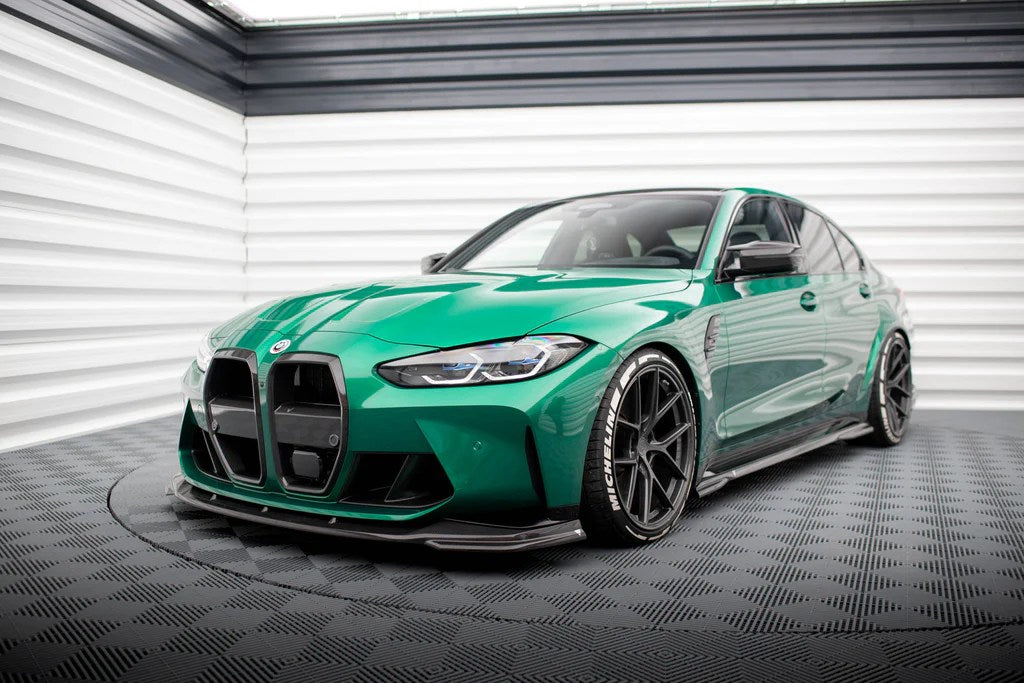Hero Image Credit: cervinis.com
If you’re looking to customise your car, you’ve probably given a lot of thought to the style that you’re after. Customising is exciting and gives you a chance to reflect your personality rather than just being one more car on the road. But have you given any thought to the range of materials that auto body kits are made of?
We’ve outlined four of the most common materials used so that you can feel prepared in making an informed decision when it comes to your kit. It’s important to be in the know so that you understand the characteristics of each, and so you can recognise value when you see it.
Polyurethane
While it’s often confused with a plastic, polyurethane is actually a ‘true elastomer’, meaning it maintains elasticity while providing strength. Plastic, on the other hand, is brittle and prone to breakage and cracks.
Polyurethane is a great choice for your kit because it’s very durable and provides a great-looking, smooth and even finish. While some materials, like fibreglass, are very rigid and prone to shattering or cracking, polyurethane holds more flex. This flex is an important factor when it comes to installation because it means pieces can be fitted more exactly and without fear of shattering. It also means that for you as a driver your body kit can flex slightly, making it better at withstanding low impact bumps and knocks (like when you have to navigate difficult driveways or car park barriers).
The downside to polyurethane is that it can warp under extreme heat, so it is important to think about the conditions you expect your car to be in. Another minor downside is that it takes specialist preparation in order to apply paint to it properly but, as mentioned before, the result is always superb once completed.

Image Credit: ebay.com
ABS Plastic
While ABS Plastic is less flexible than polyurethane it is in fact a ‘thermoplastic blend’, meaning it combines strength and rigidity with the ruggedness and durability of polybutadiene rubber. ABS Plastic is actually widely used by manufacturers as a trim material on original vehicles and this is largely because of its durability and the fact that it offers good protection against dints.
It’s also heat resistant, so that’s one less thing you have to worry about. And unlike polyurethane, ABS Plastic is very easy to apply new paint to. All in all, ABS Plastic makes for a great and reliable choice for your body kit material.

Image Credit: maxtondesign.eu
Carbon Fibre
Carbon fibre is constructed from a polymer-like epoxy that’s strengthened by incorporating actual carbon fibres. The result is not just very strong but also extremely light weight. Because of these characteristics, carbon fibre is considered by some to be top of the range and is often used for vehicles like racing cars, where extra weight is to be avoided. Carbon fibre has a great look too, as the fibres are woven into the polymer and give a really distinctive, high-impact finish.
The downside of carbon fibre is that it is generally expensive to produce and therefore expensive to purchase, so your decision might be dictated by what your budget will allow.

Image Credit: stangmods.com
Fibreglass
Fibreglass is one you’re likely to come across in your search for the right body kit. It’s inexpensive, lightweight and doesn’t warp with heat. While fibreglass can be appealing based on price-point, the downside is that it’s very rigid, making it vulnerable to shattering, cracking or chipping even in low-impact situations. Because of this, fibreglass pieces need careful professional fitting as they’re at risk of shattering if not perfectly managed.

Image Credit: japanesesportcars.com
When deciding what’s right for you, the best thing to do is go with a company you can trust. You want someone who can answer all your questions – not just about style and fit, but about materials too. At ABW, our product is made from quality ABS & polyurethane material that is designed to fit very firmly for a perfect look and a quality finish you can be proud to show off.







